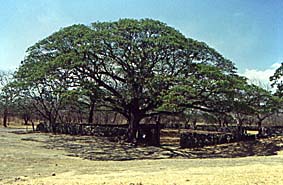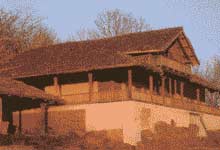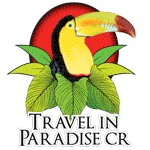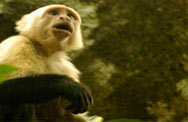|
|
Santa Rosa National Park:
: One of the first national parks to be declared, Santa Rosa is important for its history, geology, and ecology. The old hacienda buildings have been preserved as a cultural and historical museum, especially commemorating the Battle of Santa Rosa in 1856.
The rocks that form much of the Santa Elena peninsula in the extreme western sector of the park are among the oldest in Costa Rica dating back to the Cretaceous period, some 130 million years ago. The forested portions of the park comprise a large percentage of the precious little remaining area of tropical dry forest habitat throughout all of Central America.
In addition to providing refuge to the many plants and animals adapted to dry forest conditions, Santa Rosa protects two important sea turtle nesting beaches, Naranjo and Nancite. The latter is one of two beaches in Costa Rica (the other is Ostional) where Pacific Ridley Sea Turtles come ashore each year in large concentrations to lay their eggs.
Among the many creatures inhabiting the 49,515 hectares of Santa Rosa National Park, some of the more commonly seen species include: White-tailed Deer, Long-tongued Bats (that roost in the historic buildings), White-throated Capuchin Monkeys, White-throated Magpie-Jays, Orange-fronted Parakeets, and Roadside Hawks.
The vegetation in most parts of the park is characterized by being deciduous and many plant species remain leafless for much of the dry season as a means of conserving precious moisture. Another common feature of the dry forest vegetation is the high percentage of plants that have thorns or spines. The prevalence of this form of mechanical protection has led tropical biologist, Dr. Daniel Janzen, to speculate that this defense evolved eons ago in response to the pressure from huge herbivores such as Giant Ground Sloths and Mastodons that once roamed this region. Whatever the evolutionary reason may be, do be careful what you touch or brush up against in the tropical dry forest!
Getting there: From the town of Liberia, the main entrance to Santa Rosa National Park lies 32 km. north on the PanAmerican Highway. Public buses going to the town of La Cruz will let you off at the main gate. From here, it is another 10 km. to the administration area and the historical buildings. The 12 km. dirt road from the administration to Naranjo beach is normally passable only in the dry season with a four-wheel-drive vehicle (check with park service personnel before attempting this drive). Nancite beach is restricted because of turtle nesting and research programs, so advance permission is required to visit this beach -- which involves a difficult hike from Naranjo beach.
The less-developed northern sector of the park, known as Murciélago, can be reached by continuing another 10 km. north on the highway before turning left on the paved road that winds down to the coastal village of Cuajiniquil. The park ranger station is another 9 km. to the west.
Fishing: Although a bit far from most of the deep-sea fishing operations in northern Guanacaste, the Bat Islands (Islas Murciélago) off the Santa Elena Peninsula are well-known as a productive fishing spot, and are also a popular scuba-diving site.
Climate: Hot throughout the year, the chance of rain is almost nil from December to April. The rainy season which lasts from May until November is normally punctuated by a several-week dry period in July and August.
History: In 1855, a brilliant, but somewhat megalomaniacal, young North American named William Walker arrived in Nicaragua in time to bolster a flailing regime. As a result of his efforts, he set himself up as Commander-in-Chief of Nicaragua, and with the support of a mercenary army of international origin and the financial backing of interests from the Confederate Union of the southern United States, began a military campaign to conquer Central America.
His sights turned first towards Costa Rica. When word of the invasion reached San José, President Juan Rafael Mora organized a civilian militia to march to Guanacaste and confront the filibusteros, as the mercenaries were known.
When the Costa Rican forces reached the hacienda of Santa Rosa on March 20, 1856, the mercenaries were housed in the main farm building, La Casona. The ensuing battle lasted all of fourteen minutes with the national militia victorious in ousting the invaders. [This being the "epic" battle of Costa Rican history gives an insight into just how peaceful the nation's history has been.]
The filibusteros were followed back across the border into Nicaragua where the Costa Ricans clashed again with the mercenaries in the decisive battle in the town of Rivas on April 11, 1856.
Walker himself was not present in either of these battles, but after seeing his plans thwarted by the valiant defense presented by the Central American nations, he fled Nicaragua and returned to the U.S. where he practiced law for two years in San Francisco. He was unable to completely forget his ideas for a Central American takeover and in 1860 he returned to the region, but was captured and put on trial for treason by the government of Honduras. His death in front of a firing squad put an end to this strange chapter in the region's history.
History proved that it does repeat itself, and Santa Rosa was again the site of battles between Costa Rican troops and invading forces from Nicaragua in both 1919 and 1955. The first was an attempt to overthrow the dictatorship of General Federico Tinoco, the second was a coup attempt against the government of José Figueres Ferrer.
|
Travel Tips:
FAQs: You might be wondering too.
About CR
About weather
What to pack: click here to get ideas on what you really need to bring along.
What to wear: click here to get ideas on what to wear. Avoid mistaken clothes.
Our Specialty Your Best Travel, vacations Family Trips, Honeymoons, Educational Trip, Escorted Trip.
Honeymoon Beyond a romantic setting, a honeymoon in Paradise is a magical experience.
Family oriented Trip
: Is about experiencing fascinating cultures, family adventures, family tours, quality time together.
Incentives travels: Creative ideas, consulting services for a theme party or special event.
|












